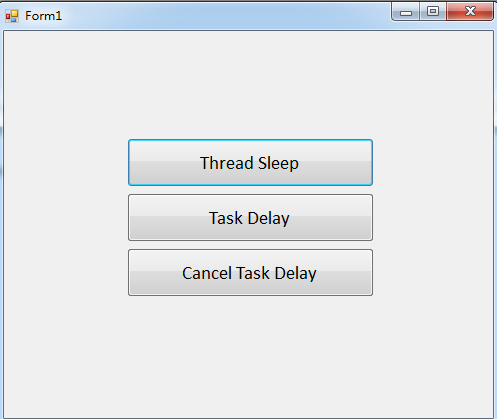 I have the following two basic helper methods and I am calling these two methods from my “Thread Sleep” and “Task Delay” button.
I have the following two basic helper methods and I am calling these two methods from my “Thread Sleep” and “Task Delay” button.
void PutThreadSleep()
{
Thread.Sleep(5000);
}
async Task PutTaskDelay()
{
await Task.Delay(5000, tokenSource.Token);
}
private void btnThreadSleep_Click(object sender, EventArgs e)
{
PutThreadSleep();
MessageBox.Show("I am back");
}
private async void btnTaskDelay_Click(object sender, EventArgs e)
{
await PutTaskDelay();
MessageBox.Show("I am back");
}
asically there is nothing to describe about the code up there (I am not going to explain what async and await here, you can find many articles in MSDN and one of my previous post explaining async/await). When I clicked both these buttons, the message boxes will be displayed after 5 seconds. But there are significant differences between these two ways. Let’s find out what.Behind the scene what is happening is there is a timer ticking till the specified time. Since there is a timer, anytime we can cancel the task delay by stopping the timer. To cancel, I am modifying the above PutTaskDelay() method as follows.
CancellationTokenSource tokenSource = new CancellationTokenSource();
async Task PutTaskDelay()
{
try
{
await Task.Delay(5000, tokenSource.Token);
}
catch (TaskCanceledException ex)
{
}
catch (Exception ex)
{
}
}
Here when the task got cancelled, it will be throwing me a TaskCanceledException. I am just catching the exception and suppressing it, because don't want to show any message about that.
So in my “Cancel Task Delay” button click event, I am asking the task to be cancelled.
private void btnCancelTaskDelay_Click(object sender, EventArgs e)
{
tokenSource.Cancel();
}
Once the task has been cancelled, the control returns immediately to the next line and message box will be shown.
https://code.msdn.microsoft.com/ThreadSleep-vs-TaskDelay-766b46b7
